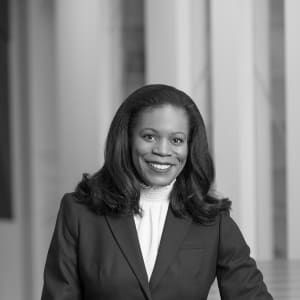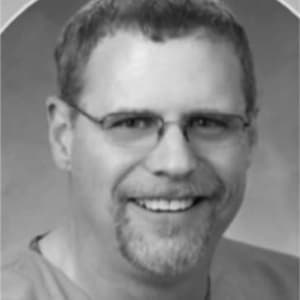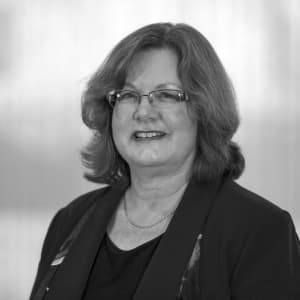7 Key Challenges Faced by Nurse Educators Today
 Credit: Getty Images
Credit: Getty ImagesAmerica is in the middle of a severe and long-standing nursing shortage. It is threatening the supply of registered nurses. The shortage has also affected the number of clinical preceptors and nursing faculty who prepare nursing students.
Nursing school enrollment cannot grow fast enough to meet the projected need. The shortage of nursing school faculty members has also limited enrollment numbers.
Nurse educators often are active clinicians, which is important to maintain quality nurse teaching. However, this also places a strain on educators with higher workloads, forcing them to work short-staffed in practice and education.
These stressors have led to a crisis in the profession. More nurses and nurse educators are seeking positions outside of nursing and feel less committed to their profession than in the past.
We interviewed several influential nurse educators who shared the challenges they face. We also explore the changes needed to improve the system and how nurses can advocate for those changes.
Nurse Educators Face Challenges Due to Nursing Shortage
The nursing shortage is expected to worsen as the baby boomer generation ages and more nurses retire. According to the American Association of Colleges of Nursing (AACN), faculty staff shortages limit student capacity at a time when growth is necessary.
There is a critical need to increase the number of nurse educators to meet the demand, but nurse educators are also under a lot of stress. To retain experienced educators and preceptors, it’s important to support their efforts.
Many challenges affect educators today. Nurse educators identified the following challenges that affect their ability to nurture and educate the future generation of nurses.
1. Lack of Resources
Nurse educators are well aware of a faculty shortage in programs around the country.
- Schools were forced to turn away 80,407 qualified students from undergraduate and graduate programs in 2019. This is an increase from the 68,000 turned away in 2014.
- In one survey of 892 nursing schools, 1,637 vacancies were identified. There is also a need to create an additional 134 positions to accommodate the rising demand.
Erica Jastrow has been a nurse educator for over 17 years and sees firsthand the lack of human resources in nursing facilities.
“In some schools,” she says, “faculty members manage all aspects for the nursing program from admissions, to advising, to instruction.”
This lack of human resources places additional stress on stretched-thin faculty members with limited time and resources. In addition to the faculty who have reached retirement age, other nurse educators are leaving the profession, furthering the issue.
Anne Dabrow Woods has witnessed and experienced the challenges facing faculty. She teaches in the graduate program at Drexel University and says it is imperative we address the issues faced by educators today.
Woods says we must:
- Increase nurse educator salaries and pay them what they are worth
- Provide learning opportunities for adjunct faculty
- Use academic and practice partnerships to develop and fund adjunct faculty programs.
2. Curriculum Challenges
Sherri Wilson, DNP, is the director of health career programs at Stride, a provider of tech-enabled education programs. She identifies several curriculum challenges that impact new nursing students and teaching faculty.
Students must overcome several barriers just to enroll in nursing programs. Once accepted, they face additional challenges to succeed in the program. Some students don’t have the tools they need, and others may not understand what the career involves.
Wilson suggests starting early by offering ways high school students can prepare for a nursing career. Students may learn more through classwork, clubs, mentorship, or dual enrollment.
“The sooner we can introduce students to the prerequisites, requirements, and opportunities in nursing and nurse education, the better,” she says.
Nurse educators also face curriculum challenges. Most programs are seeking faculty with doctorates. According to the Special Survey on Vacant Faculty Positions in 2019 reported by the AACN, 89.7% of faculty openings required or preferred a doctoral degree.
Wilson notes that doctorates are either research focused or clinical focused. Yet most programs do not include substantial academic coursework to prepare graduates for a teaching or faculty role, she says. It is necessary to reevaluate the curriculum used to teach future teachers.
3. Representation in Faculty and Training
Wilson also seeks representation of different cultural backgrounds in faculty and preceptors. A recent AACN study found that 93% of full-time faculty were female, and only 17% were from underrepresented groups.
“A more diverse nursing faculty can help to broaden the perspectives of nursing students and can provide sources of mentorship for minority nurses,” Wilson says.
The recent Future of Nursing Report 2020-2030 explored how the profession could develop different curricula. The goal would prepare nurses to reduce health disparities and inequities, like how nurses can address disparities in infant mortality, by using cost-effective strategies. These include technology and maintaining patient- and family-focus care.
To address these issues, there needs to be better representation in nursing and cultural competence in nursing. With a diverse workforce, nurses can serve communities better by understanding and identifying the social determinants of health.
“Finding ways to connect more nursing students to learning opportunities in the communities they serve will empower them to work with people of different backgrounds and from various life experiences,” Wilson says.
4. Fostering and Maintaining Student Relationships
Student-teacher relationships are important from elementary school through graduate school. They lead to:
- Academic achievement
- Increased motivation to learn
- Professional student development
Yet, stressed and overworked faculty often have little time to build constructive and authentic relationships with their students.
The lack of student-teacher relationships may have an unfortunate trickle-down effect on some students’ future career development. It could discourage students from furthering their education and choosing a career as a nurse educator.
Strong student-teacher relationships can help bridge the gap and support students’ efforts. Some students are working in healthcare while completing their education. Mandated hours or extra shifts are obstacles to completing assignments, maintaining grades, and attending class.
“Showing a student that you care about them and are there to support them may make the difference between a student who drops out or fails in the program and one that is successful,” Jastrow says.
5. Pay Inequality
Pay inequality in nurse educator roles is a significant obstacle to attracting new faculty. According to the U.S. Bureau of Labor Statistics, the median salary for a nurse educator is $75,470.
Nurses with comparable education levels make far more than nurse educators, with nurse practitioners making $114,510 annually, on average. This pay deficit causes master’s- and doctoral-level nurses to not pursue nurse teaching.
It is crucial that the compensation for nurse educators match their experience and education. This will help to attract quality faculty to nursing programs.
H. Eva Hvingelby is a faculty member at Walden University and clinical advisor at Optum. She sees the challenges with pay inequality and the need for immediate change.
She says that higher educator pay and smaller teacher-to-student ratios will make training new nurses more attractive to clinicians. But these adjustments will not come easily.
“While it is difficult to implement these changes when there is already an acute shortage,” she says, “not doing so risks further loss of capable personnel, worsened patient outcomes, and higher healthcare costs.”
6. Lack of Preceptors
Nurse educators and nursing students are impacted by the lack of preceptors available to nursing students. The nursing shortage has meant that many nursing units work short-staffed with higher than normal staff-to-patient ratios.
Nursing preceptors are a guiding hand and a steady voice for nursing students. When there is not enough available or low staffing, it can impact the quality of a nursing student’s education or new nursing graduate.
Tony Anno is a core faculty member at Walden University. He says online and traditional classroom learning face challenges from the restrictions and lack of access to clinical sites and preceptors.
However, nursing programs have a role in addressing the shortage in innovative ways.
For instance, Anno notes that Walden University has identified areas where students could complete some or all of their clinical hours using telehealth nursing services.
7. Lack of Opportunity to Update Knowledge and Skills
The nursing shortage in academia and clinically has stretched nurse educators’ resources thin. Nurse educators do not have the time to update their knowledge and skills.
This lack of opportunity was the most frequently described frustration for clinical nurse educators in one study. Additionally, this can contribute to the rising levels of nursing burnout as it contributes to nurse educators’ acute and chronic stress levels.
One study confirmed what most nurse educators know: Nurses value professional development and believe it is integral to improving patient care standards.
Access to continuing education for nurses to update knowledge and skill levels helps maintain high standards of care. This is essential when educating and training the next generation of nurses.
“Universities, as well as hospital systems and other healthcare providers, should look for ways to continually upskill their existing workforce and faculty on the latest practices and technologies,” Wilson says.
Wilson stresses the need for continued education and skill development in the face of rapidly changing technology. Nurse educators are expected to possess these skills to advance quality and address emerging needs.
What Needs to Change and How Nurses Can Get Involved
Despite challenges during the pandemic, turning away thousands of qualified candidates, and a shortage of nurse educators, enrollment in nursing programs across the country was up by 5.6% in 956 programs surveyed. However, significant changes must be made to raise enrollment and fill open nursing positions.
The pandemic has highlighted long-standing issues in healthcare that have contributed to the nursing shortage. Wilson says nurses are currently “uniquely positioned to become involved in the policy process to advocate for resources to address this complex issue.”
Woods believes the answer lies in innovation, perseverance, and resilience.
“Given this landscape, investing in learning technologies is no longer a ‘nice to have’ for nursing education but truly essential,” she says.
With the increased adoption of educational technology, we will also see a shift in funding to address previous hurdles that nurse educators faced in accessing these technologies, Wilson says.
What Needs to Change to Increase the Nurse Educator Retention Rates
- Bridge the wage gap between clinical roles and educators, so salaries align with other nurses holding graduate and doctoral degrees.
- Reduce teacher-to-student ratios to improve education and make the nurse educator role more attractive to clinicians.
- Better prepare nurse educators in their master’s or doctoral programs with academic coursework to prepare them for a teaching role.
- Increase human resource support for admission and advising so faculty can focus on teaching.
- Value the time and effort necessary to foster better student-faculty relationships, which improves a student’s education and faculty job satisfaction.
- Provide recognition for faculty members within the nursing program.
- Offer nursing scholarships that encourage students to pursue positions as nurse educators.
- Improve clinical working conditions, staff ratios, and work-life balance for nurses and nurse educators.
- Give faculty the opportunity and time to update their knowledge and skills.
- Partner academic centers with healthcare systems to develop adjunct faculty training programs.
- Invest in better mental health resources for nurses and nurse educators.
- Invest in innovation technologies.
Nurse educators can advocate for change and promote ways for nurses to effect change in their profession. They can provide information and perspective from professionals working in the field through taking advantage of professional nursing associations and advocacy groups.
Often involvement does not require hours of time and energy but rather phone calls and emails to state legislators to support or defend policy change.
Nurse educators may also consider working with the administration in their program to use creative strategies to meet the needs of the students and faculty.
It can be challenging to push for change. Yet, many colleges and universities are now recognizing the need for innovation to reduce the nursing shortage and attract qualified nurses as teachers and faculty.
Meet Our Contributors

Sherri Wilson oversees the development and implementation of curriculum and partnerships in the healthcare field as director of health career programs at Stride, Inc. – a provider of tech-enabled education programs. Prior to joining Stride, Wilson served as a public health administrator with Fairfax County.
Wilson earned her doctor of nursing practice from Johns Hopkins University, a master’s in public administration from Seton Hall University, and a bachelor of science in nursing from Hampton University. In 2021, Wilson was named president-elect of the Virginia Nurses Association.

Erica Jastrow has been a registered nurse for over 20 years and a nurse educator in higher education for over 17. She has led several prelicensure nursing programs and currently serves as an assistant professor and RN-to-BSN program director at William Peace University. She has a BSN from Lenoir Rhyne University, an MSN in nursing education from UNC-Greensboro, and a doctorate in education from Grand Canyon University.

Tony Anno is a core faculty member in Walden University’s master of science in nursing program. Anno currently practices in cardiology/electrophysiology at the Kansas City VA Medical Center and volunteers as the sole provider for Health Partnership Clinic. The clinic provides healthcare to patients regardless of income or insurance status.
Anno is certified by the International Board of Heart Rhythm Examiners as a certified cardiac device specialist and certified electrophysiology specialist. He is also a registered cardiac diagnostic sonographer.

H. Eva Hvingelby is a faculty member in Walden University’s master of science in nursing program and a clinical advisor for Optum. She has 21 years of experience as a healthcare clinician. In addition, she spent seven years with the federal government researching and supporting outreach to marginalized populations. Hvingelby consults on strategies to improve clinical communication and collaboration across disciplines.

Anne Dabrow Woods is the chief nurse at Wolters Kluwer, Health, Learning, Research and Practice. She drives the strategic development of evidence-based solutions for nurses and nursing institutions. A nurse for over 37 years and a nurse practitioner since 1998, Dabrow Woods currently practices as an acute care/critical care nurse practitioner at Penn Medicine, Chester County Hospital. She also teaches in the graduate nursing program at Drexel University as clinical adjunct faculty.
Dabrow Woods earned a bachelor’s from West Chester University, a master’s from LaSalle University, a postmaster’s certificate from Drexel University, and a doctor of nursing practice from Texas Christian University. She is also a fellow in the American Academy of Nursing.
Page last reviewed December 16, 2021